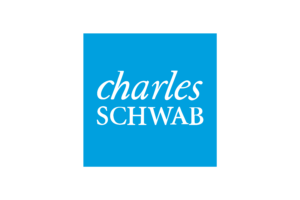
TL;DR: Planning for retirement as a small business owner requires a unique approach. Without employer-sponsored plans, entrepreneurs must build and manage their own strategies—balancing saving for the future with growing their business. This guide covers the best small business owner retirement strategies and how to prepare for a smooth transition into retirement.
Here’s what you’ll learn:
- Why retirement planning differs for small business owners (no 401(k)s or pensions).
- How to handle fluctuating income while saving consistently.
- The pros and cons of treating your business as a retirement asset.
- How succession planning protects your legacy and employees.
- The best retirement plan options—like SEP IRAs, Solo 401(k)s, and SIMPLE IRAs—to fit your goals and business size.
Being a small business owner isn’t easy. There are long nights and tight margins, but it’s all worth it to build something of your own.
But what happens when the hard work is done and it’s time to retire?
Unlike traditional employees who have access to employer-sponsored 401(k)s or pensions, small business owners must create their own retirement path. It’s a unique challenge that requires both strategic financial planning and a clear vision for your future beyond the business.
The good news? With the right strategy, you can grow your business and your retirement savings at the same time
In this guide, we’ll explore the best retirement options for small business owners and expert tips for balancing savings with growth as you move into this next chapter of life.
Why Retirement Planning Is Different for Small Business Owners
Small business owner retirement strategies aren’t the same as your typical retiree. As we said before, entrepreneurs can’t always rely on pensions, and they still have to juggle operating a business.
Let’s take a closer look at why retirement planning for small business owners is unique:
No Employer-Sponsored Plan
Small business owners are responsible for creating and managing their own retirement strategy. This means taking on the role of both employer and employee when it comes to saving for the future.
Instead of relying on HR to handle contributions or compliance, you must decide:
- Which type of retirement plan best fits your business structure and goals.
- How much you can realistically contribute each year.
- How to balance retirement savings with operational costs and business growth.
While it’s an extra layer of responsibility, it also gives you greater control and flexibility to choose a plan that works best for you and your employees.
Fluctuating Income and Cash Flow Challenges
Owning a small business comes with plenty of ups and downs. Especially when it comes to cash flow.
One year may bring record profits, while the next could be defined by unexpected expenses or economic downturns. This inconsistent income makes it harder to set aside money for retirement.
The key is to build flexibility into your savings plan. Try to set a baseline amount you can contribute every year and increase contributions during high-profit periods.
Business as a Retirement Asset
For many entrepreneurs, their business is their biggest retirement plan. The idea is that one day, they’ll sell the company, cash out, and use the proceeds to fund their retirement.
While this strategy can work, it comes with many risks. If your business’s value dips when you’re ready to retire, your entire financial future could be affected.
A smarter approach is to treat the business as one piece of your overall retirement portfolio, not the whole plan. Consider diversifying your investments to create multiple income streams for the future.
Business Succession Planning
Of course, you don’t have to sell your small business to retire.
It’s equally important to consider what happens to your business and your wealth after you step away. That’s where succession planning (which is part of legacy planning) comes in.
A thoughtful legacy plan ensures that:
- Your business transitions smoothly to the next generation or new leadership.
- Your family and employees are financially protected.
- Your personal and business assets are distributed according to your wishes.
By planning early, you give your successor time to grow into the role and protect your business from disruption when you step away.

The Best Retirement Options for Small Business Owners
There are several small business owners’ retirement plans that provide the flexibility entrepreneurs need. However, you should always remember that the best plan depends on your business and retirement goals.
Here are a few of the best retirement plans for small business owners to consider:
SEP IRA (Simplified Employee Pension IRA)
The SEP IRA is one of the simplest and most popular small business owner retirement plans. It’s ideal for self-employed individuals and businesses with a few employees because it’s easy to set up and maintain.
Solo 401(k)
An individual 401(k) is one of the most powerful retirement options for self-employed individuals or businesses with no employees (other than a spouse).
SIMPLE IRA (Savings Incentive Match Plan for Employees IRA)
A Savings Incentive Match Plan for Employees is ideal for small businesses with fewer than 100 employees. It’s easier to set up than a 401(k) but still offers meaningful retirement benefits for you and your team.
Defined Benefit Plan
A Defined Benefit Plan functions much like a traditional pension and can be attractive to established business owners with high, stable incomes.
Traditional and Roth IRAs
Traditional and RothIRAs remain excellent supplementary options for small business owners. They provide added tax flexibility and can complement your primary business retirement plan.
How Do Small Business Owners Save for Retirement While Growing Their Business?
Balancing business growth with personal savings can feel daunting. But with the right approach, you can nurture both.
Start by treating your retirement contributions as a non-negotiable expense, not an afterthought. Even modest, consistent contributions can grow substantially over time. Consider automating your savings to maintain discipline during both busy and slow seasons.
Next, reinvest wisely and don’t neglect your personal wealth. You can also maximize tax efficiency by leveraging deductions and credits tied to qualified retirement plans.
A financial advisor who understands small business dynamics can help you select the best retirement plan and align your personal wealth strategy with your business growth.
Balance business success with retirement goals—see how we can assist.
EIA Income Advisors, Inc. is a registered investment adviser and only conducts business in jurisdictions where it is properly registered, or is excluded or exempted from registration requirements. Registration is not an endorsement of the firm by securities regulators and does not mean the adviser has achieved a specific level of skill or ability. The firm is not engaged in the practice of law or accounting.
We reserve the right to edit blog entries and delete comments that contain offensive or inappropriate language. Comments that potentially violate securities laws and regulations will also be deleted.
The information presented is believed to be factual and up-to-date, but we do not guarantee its accuracy and it should not be regarded as a complete analysis of any topics discussed. All expressions of opinion reflect the judgment of the authors on the date of the post and are subject to change. A professional adviser should be consulted before making any investment decisions. Content should not be viewed as personalized investment advice or as an offer to buy or sell any of the securities discussed.
All investments and strategies have the potential for profit or loss. Different types of investments involve higher and lower levels of risk. There is no guarantee that a specific investment or strategy will be suitable or profitable for an investor’s portfolio. There are no assurances that an investor’s portfolio will match or exceed a specific benchmark.
Historical performance returns for investment indexes and/or categories usually do not deduct transaction and/or custodial charges, or advisory fees, which would decrease historical performance results.
Hyperlinks on this blog are provided as a convenience. We cannot be held responsible for information, services, or products found on websites linked to our posts.
Annuity and life insurance guarantees are subject to the claims-paying ability of the issuing insurance company. If you withdraw money from or surrender your contract within a certain time after investing, the insurance company may assess a surrender charge. Withdrawals may be subject to tax penalties and income taxes. Persons selling annuities and other insurance products receive compensation for these transactions. These commissions are separate and distinct from fees charged for advisory services. Insurance products also contain additional fees and expenses.
Social Security rules and regulations are subject to change at any time. Always consult with your local Social Security office before acting upon any information provided herein.
Tax and legal information contained in this publication is general in nature and should not be relied upon as tax or legal advice. Always consult an attorney or tax professional regarding your specific legal or tax situation. Tax and pension rules are subject to change at any time.





